PRG420 Java Programming I
Need Help in PRG/420 Java Assignments?
We can help you if you are having difficulty with your PRG420 Assignment. Just email your assignments at support@assignmentcache.com.
We provide help for students all over the world.
-
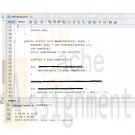
PRG/420 Week 5 Java 5.23 LAB: Adjust list by normalizing - methods
Regular Price: $7.00
Special Price $3.00
PRG/420 Week 5 Java 5.23 LAB: Adjust list by normalizing - methods
When analyzing data sets, such as data for human heights or for human weights, a common step is to adjust the data. This can be done by normalizing to values between 0 and 1, or throwing away outliers. For this program, adjust the values by subtracting the smallest value from all the values. The input begins with an integer indicating the number of integers that follow. Assume that the list will always contain less than 20 integers.
Ex: If the input is:
5 30 50 10 70 65
the output is:
20 40 0 60 55
For coding simplicity, follow every output value by a space, even the last one.Your program must define and call a method:
public static int getMinimumInt(int[] listInts, int listSize)Note: This is a lab from a previous chapter that now requires the use of a method.
Learn More -
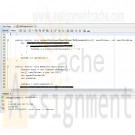
PRG/420 Week 5 Java 5.22 LAB: Output values below an amount - methods
Regular Price: $7.00
Special Price $3.00
PRG/420 Week 5 Java 5.22 LAB: Output values below an amount - methods
Write a program that first gets a list of integers from input. The input begins with an integer indicating the number of integers that follow. Then, get the last value from the input, and output all integers less than or equal to that value. Assume that the list will always contain less than 20 integers.
Ex: If the input is:
5 50 60 140 200 75 100
the output is:
50 60 75The 5 indicates that there are five integers in the list, namely 50, 60, 140, 200, and 75. The 100 indicates that program should output all integers less than or equal to 100, so the program outputs 50, 60, and 75. For coding simplicity, follow every output value by a space, including the last one.
Such functionality is common on sites like Amazon, where a user can filter results. Write your code to define and use two methods:
public static void getUserValues(int[] myArr, int arrSize, Scanner scnr)
public static void outputIntsLessThanOrEqualToThreshold(int[] userValues, int userValsSize, int upperThreshold)Utilizing methods will help to make main() very clean and intuitive.
Learn More
Note: This is a lab from a previous chapter that now requires the use of methods. -
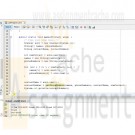
PRG/420 Week 5 Java 5.21 LAB: Contact list
Regular Price: $7.00
Special Price $3.00
PRG/420 Week 5 Java 5.21 LAB: Contact list
A contact list is a place where you can store a specific contact with other associated information such as a phone number, email address, birthday, etc. Write a program that first takes as input an integer N that represents the number of word pairs in the list to follow. Word pairs consist of a name and a phone number (both strings). That list is followed by a name, and your program should output the phone number associated with that name. Assume that the list will always contain less than 20 word pairs.
Ex: If the input is:
3 Joe 123-5432 Linda 983-4123 Frank 867-5309
Frank
the output is:
867-5309Your program must define and call the following method. The return value of getPhoneNumber() is the phone number associated with the specific contact name.
public static String getPhoneNumber(String[] nameVec, String[] phoneNumberVec, String contactName, int arraySize)Hint: Use two arrays: One for the string names, and the other for the string phone numbers.
Learn More -
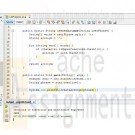
PRG/420 Week 5 Java 5.20 LAB: Acronyms
Regular Price: $7.00
Special Price $3.00
PRG/420 Week 5 Java 5.20 LAB: Acronyms
An acronym is a word formed from the initial letters of words in a set phrase. Write a program whose input is a phrase and whose output is an acronym of the input. If a word begins with a lower case letter, don't include that letter in the acronym. Assume there will be at least one upper case letter in the input.
Ex: If the input is Institute of Electrical and Electronics Engineers, the output should be:
IEEEYour program must define and call a method thats returns the acronym created for the given userPhrase.
public static String CreateAcronym(String userPhrase)Hint: Refer to the ascii table to make sure a letter is upper case.
Learn More -
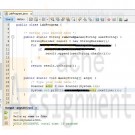
PRG/420 Week 5 Java 5.19 LAB: Remove spaces - methods
Regular Price: $7.00
Special Price $3.00
PRG/420 Week 5 Java 5.19 LAB: Remove spaces - methods
Write a program that removes all spaces from the given input.
Ex: If the input is:
Hello my name is John.
the output is:
HellomynameisJohn.Your program must define and call the following method. The method should return a string representing the input string without spaces.
public static String removeSpaces(String userString)Note: This is a lab from a previous chapter that now requires the use of a method.
Learn More -
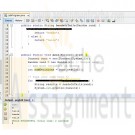
PRG/420 Week 5 Java 5.18 LAB: Flip a coin
Regular Price: $7.00
Special Price $3.00
PRG/420 Week 5 Java 5.18 LAB: Flip a coin
Write a program that simulates flipping a coin to make decisions. The input is how many decisions are needed, and the output is either heads or tails. Assume the input is a value greater than 0.
Ex: If the input is:
3
the output is:
tails
heads
tailsFor reproducibility needed for auto-grading, seed the program with a value of 2. In a real program, you would seed with the current time. In that case, every program's output would be different, which is what is desired but can't be auto-graded.
Note: A common student mistake is to create an instance of Random before each call to rand.nextInt(). But seeding should only be done once, at the start of the program, after which rand.nextInt() can be called any number of times.
Your program must define and call the following method that returns "heads' or 'tails".
Learn More
public static String headsOrTails(Random rand) -
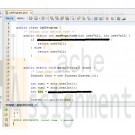
PRG/420 Week 5 Java 5.17 LAB: Max magnitude
Regular Price: $7.00
Special Price $3.00
PRG/420 Week 5 Java 5.17 LAB: Max magnitude
Write a method maxMagnitude() with two integer input parameters that returns the largest magnitude value. Use the method in a program that takes two integer inputs, and outputs the largest magnitude value.
Ex: If the inputs are:
5 7
the method returns:
7Ex: If the inputs are:
-8 -2
the method returns:
-8Note: The method does not just return the largest value, which for -8 -2 would be -2. Though not necessary, you may use the absolute value built-in math method.
Your program must define and call a method:
Learn More
public static int maxMagnitude(int userVal1, int userVal2) -
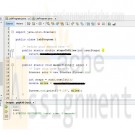
PRG/420 Week 5 Java 5.16 LAB: Step counter
Regular Price: $7.00
Special Price $3.00
PRG/420 Week 5 Java 5.16 LAB: Step counter
A pedometer treats walking 2,000 steps as walking 1 mile. Write a program whose input is the number of steps, and whose output is the miles walked.
Output each floating-point value with two digits after the decimal point, which can be achieved as follows:
System.out.printf("%.2f", yourValue);Ex: If the input is:
5345
the output is:
2.67Your program must define and call a method:
Learn More
public static double stepsToMiles(int userSteps) -
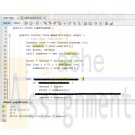
PRG/420 Week 4 Java 4.16 LAB: Two smallest numbers
Regular Price: $7.00
Special Price $3.00
PRG/420 Week 4 Java 4.16 LAB: Two smallest numbers
Write a program that reads a list of integers, and outputs the two smallest integers in the list, in ascending order. The input begins with an integer indicating the number of integers that follow. You can assume that the list will have at least 2 integers and fewer than 20 integers.
Ex: If the input is:
Learn More
5 10 5 3 21 2
the output is:
2 3
To achieve the above, first read the integers into an array.
Hint: Make sure to initialize the second smallest and smallest integers properly. -
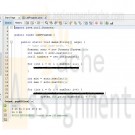
PRG/420 Week 4 Java 4.15 LAB: Elements in a range
Regular Price: $7.00
Special Price $3.00
PRG/420 Week 4 Java 4.15 LAB: Elements in a range
Write a program that first gets a list of integers from input. The input begins with an integer indicating the number of integers that follow. Assume that the list will always contain fewer than 20 integers.
That list is followed by two more integers representing lower and upper bounds of a range. Your program should output all integers from the list that are within that range (inclusive of the bounds). For coding simplicity, follow each output integer by a space, even the last one. The output ends with a newline.Ex: If the input is:
Learn More
5 25 51 0 200 33 0 50
then the output is:
25 0 33
(the bounds are 0-50, so 51 and 200 are out of range and thus not output).
To achieve the above, first read the list of integers into an array.





